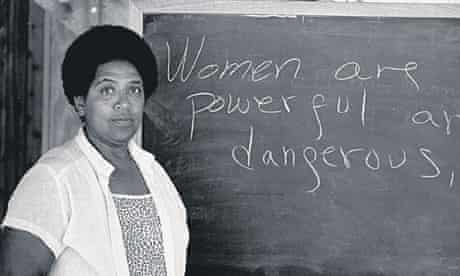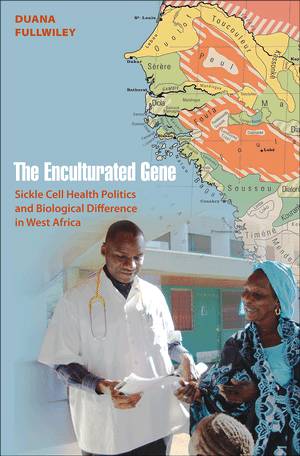Examining race and ethnic relations through an intersectional lens, Shirley J. Yee’s An Immigrant Neighborhood investigates the ways that race, class, and gender together shaped concepts of integration and assimilation as well as concepts of whiteness and citizenship in lower Manhattan during the late nineteenth and early twentieth centuries.
In contrast to accounts of insulated neighborhoods and ethnic enclaves, Yee’s study unearths the story of working-class urban dwellers of various ethnic groups—Chinese, Jews, Italians, and Irish—routinely interacting in social and economic settings.
Recounting the lived experiences in these neighborhoods, Yee’s numerous, fascinating anecdotes—such as the story of an Irishman who served for many years as the only funeral director for Chinese residents—detail friendships, business relationships, and sexual relationships that vividly counter the prevailing idea that ethnic groups mixed only in ways that were marked by violence and hostility.
In the winter of 1877, a group of mourners gathered in a dimly lit funeral parlor on Pearl Street in lower Manhattan to pay their last respects to Ah Fung (sometimes referred to as Ah Lung), a Chinese man who had been brutally murdered in his Lower East Side apartment. He had died of “ghastly wounds” at Bellevue Hospital after living for eighty hours with his brain exposed. Both Irish and Chinese people attended the funeral, including Mrs. Ah Fung, a woman of Irish ancestry. The New York World described the mixed gathering as “something unprecedented . . . [that gave] a good idea of the cosmopolitan character of the city” Given the well-publicized history of anti-Chinese hostility among the Irish working class, it is not surprising that the editors viewed the Ah Fung funeral as an anomaly.
The details of Ah Fung’s life are murky. The World described him as a laundry worker, while the New York Times reported that he had eked out a living making cigars and cigarettes with a Chinese man, Tung Ha, also known as “Peter Johnson,” and his white wife, Theresa. The three lived at 17 Forsyth Street, located in an ethnically mixed neighborhood across from the future site of the Manhattan Bridge. For unknown reasons, the household had not included Ah Fung’s wife; the two apparently had been living apart for several months before the attack.
Like other working-class immigrant communities, the Chinese called on their local mutual aid societies to help cover the funeral costs. Members of the Ene E. Jong, a Chinese burial society, raised $200 for the funeral and burial expenses. But the dead man’s friends and relatives had to look outside the Chinese community for an undertaker, for it would not be until the 1930s that the Chinese could hire a licensed Chinese funeral director. They hired William H. Kennedy, who placed Ah Fung’s coffin in his carriage house “amidst numerous hacks, coffins of several sorts, and a dreary looking hearse.” The forty-five-year-old Irish immigrant was a former carpenter and stable and livery keeper known for having “buried all the Chinese that [had] died in the down-town settlement for a number of years past.” Readers of the World caught a glimpse of Chinese customs from Kennedy, who provided a lengthy description of Chinese funeral and burial rituals, information he had acquired after many years of serving the local Chinese community. He also provided details of the Ah Fung funeral, noting that Mrs. Ah Fung, whom he described as “bright and intelligent,” was apparently unmoved by her husband’s violent death. In the undertaker’s view, the young woman was “not in the least crushed by affliction, for having left a tidy sum to his widow, she [was] not left in poverty by the demise of her husband.” Kennedy’s perception that Mrs. Ah Fung was not aggrieved but satisfied at her newly acquired financial state reinscribed popular racial stereotypes of the time—that she could never have entered the marriage out of love, but only for economic gain.
The newspaper reports of Ah Fung’s murder and the funeral that followed were no different from other tales of interracial love, sex, and violence that had become standard fodder in an increasingly sensationalist press by the late nineteenth century. But once we sift through the lurid details of the crime and the “colorful” descriptions Kennedy provides, a layer of interracial/interethnic social and economic relations that operated beneath the radar of popular depictions of urban life begins to surface. Ah Fung’s community in 1877 consisted of both Chinese and non-Chinese people who in various ways provided friendship, kinship ties, social services, and financial as well as emotional support.
Ah Fung’s situation was not unusual. Interrracial/interethnic relations were a common feature of daily life among working-class New Yorkers even as the ethnic composition of working-class neighborhoods in lower Manhattan changed over time. Nearly fifty years after Ah Fung’s funeral, a few blocks north of Forsyth Street, Johanna Hurley sat with Ching Yeng and her four-year-old daughter, Lung Som Moy, as Ching’s husband, Lung Lin, lay dying. Hurley, a widowed German immigrant, lived in the same apartment building and had summoned the ambulance. The building on Division Street, where Hurley’s and Ching’s families resided, housed an ethnically mixed population of old and new immigrants, the latter being mostly Russian and Polish Jews who worked in the city’s garment factories, ran small shops, or peddled wares in the densely populated neighborhoods of lower Manhattan. Moy’s father worked as a store manager several blocks over on Pell Street in the area popularly known as “Chinatown.”…
…The language and politics of difference have undergone significant changes over the past two centuries, encoded in the categories “nationality,” “race,” “ethnicity,” “gender,” “culture,” and “class.” Such terms can denote group identities as well as official designations for enumeration and the development of public policy. Popular, legal and social-science definitions of race and ethnicity have been fluid and often inconsistent. In 1911, the Immigration Commission, headed by William P. Dillingham, departed from the practice of classifying people according to country of origin, opting instead to categorize people according to race. The commission defined race broadly rather than adopting the accepted notion that five distinct races existed—Caucasian, Mongolian, African, Malay, and Indian—which, its report argued, confined itself to only physical characteristics and color. According to the report, widening the definition of race to include what social scientists of the time would have referred to as “culture” was, the commission believed, more statistically accurate and practical in its effort to identify diverse groups coming from particular countries of origin. Thus, the commission retained the desire to classify, coming up with forty categories that it believed more accurately represented the identity of immigrant groups.
The terminology of race remained inconsistent in “objective” government documents, as well as in the courts. The social construction of race as an official classification shaped the ways in which government documents, such as the census, have categorized immigrants and their descendants into specific “racial” groups and reported their country of origin, or nationality. Even though federal census reports added more detail in terms of the numbers of categories, race remained an ambiguous category. Once classified as simply “colored” along with African Americans, the Chinese, for example, were classified as “Ch” for Chinese by 1890, but their children could be classified as either “Chinese” or “white,” especially if they had been born of marriages between Chinese and women of European ancestry. People of African descent were categorized alternatively as “colored,” “Negro,” “Black,” or “mulatto.” Such inconsistencies reflected the continued confusion among census takers about what race “really” was. At the root of the race problem were shifting meanings of whiteness.
Between the late nineteenth century and the 1930s, popular understandings of “race” had undergone important changes. As the nation moved steadily toward the narrow “one-drop” rule that signified “blackness,” the meaning of “whiteness” expanded to include the Irish and, later, all Europeans of Caucasian ancestry. By 1920, concerns about how to define “white” and, hence, “non-white” made its way into the U.S. Census guidelines. For the first time, the introduction to the census articulated the notion of racial purity as a way to resolve the problem of classifying mixed-race people and provided guidelines for census takers (who, as it turned out, used their own discretion when classifying people anyway). While previous census reports had simply declared “whiteness” to mean people of European ancestry, in the 1920 guidelines, the government added the terms “purity” and “blood” to further specify the meanings of “white,” “non-white,” and mixed-white: “The term ‘white’ as used in the census reports refers to persons understood to be pureblooded whites. A person of mixed blood is classified according to the nonwhite racial strain or, if the nonwhite blood itself is mixed, according to his racial status as adjudged by the community in which he resides.”…


